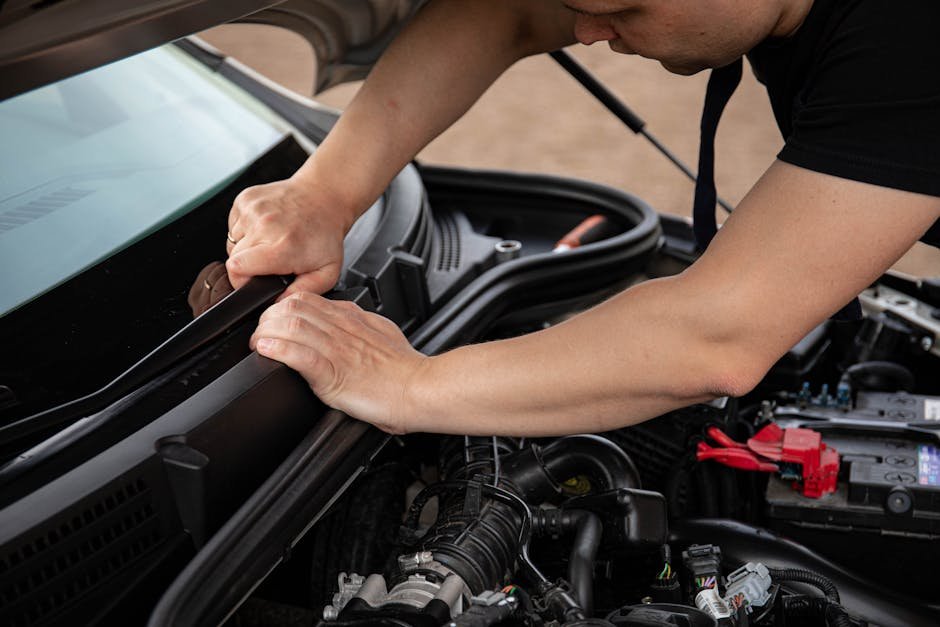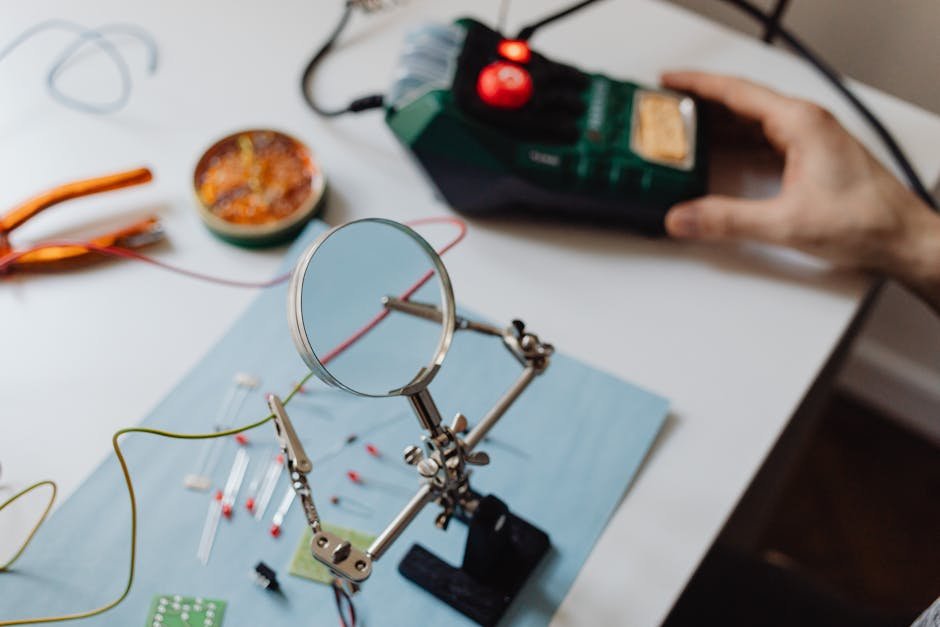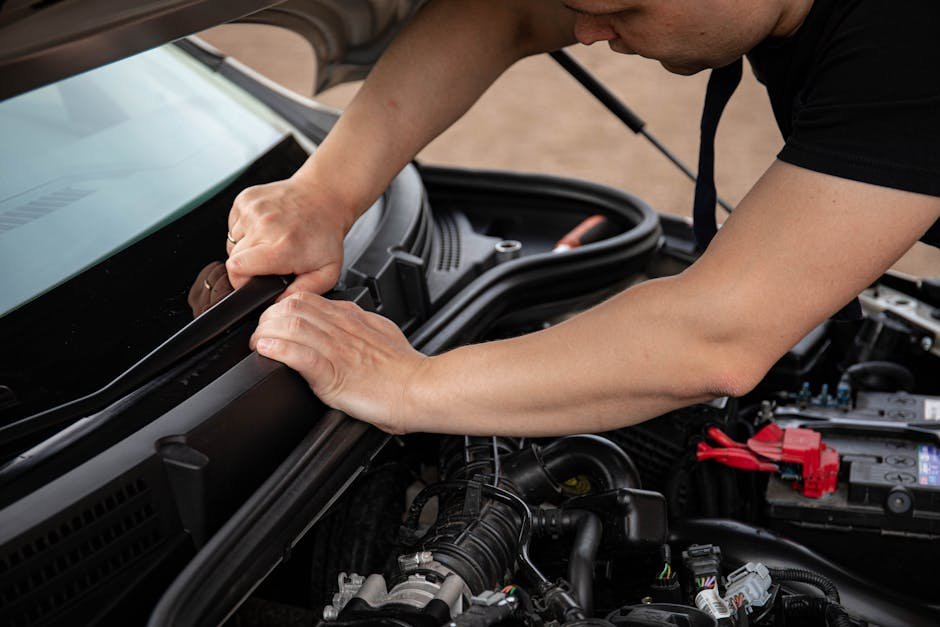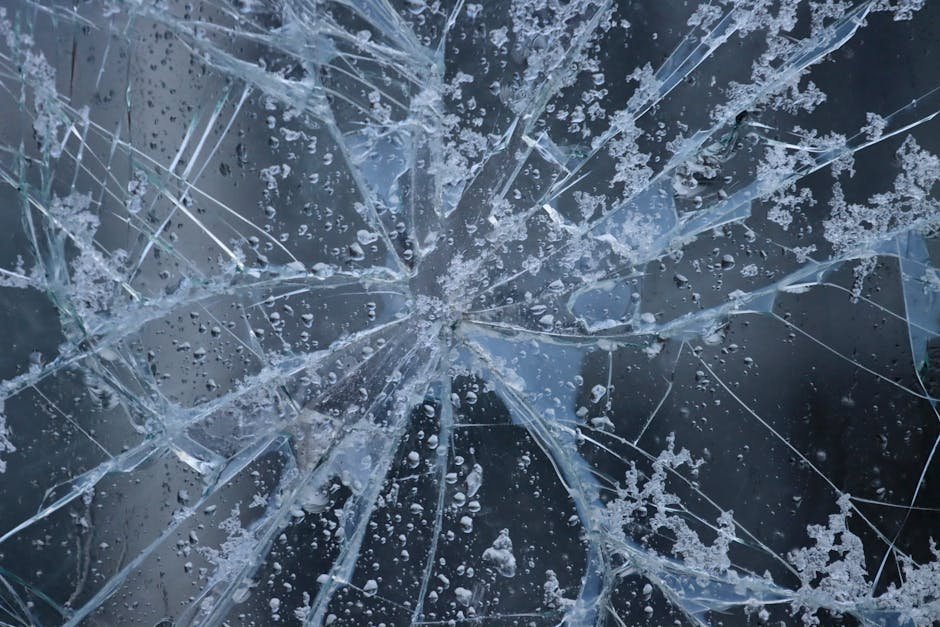Introduction
A cracked windshield poses significant risks to your vehicle's safety and can lead to expensive repairs if not addressed promptly. Addressing a cracked windshield is crucial to prevent further damage and ensure your driving safety.
This guide delves into effective strategies to prevent a cracked windshield from spreading. You will learn about common causes of windshield damage, identify different types of cracks, understand the associated safety risks, and discover practical methods to prevent further damage.
Explore the following sections for detailed insights:
Understanding Windshield Damage: Learn about the sources of windshield cracks, including the unseen dangers of driving with a cracked windshield.
Types of Windshield Damage: Differentiate between various forms of windshield damage.
Safety Risks and Structural Impact: Understand the hazards of driving with a cracked windshield.
Methods to Prevent Cracks from Spreading: Effective strategies to mitigate further damage, such as using a glass repair kit for minor windshield damage.
Early Identification and Timely Repairs: Importance of regular inspections and professional repairs, which specializes in auto glass chip and crack repairs in Houston since 1995.
Taking immediate action when you notice a crack can save you from costly repairs and ensure your safety on the road. Dive into each section for comprehensive advice on maintaining your windshield's integrity.
Understanding Windshield Damage
Cracked windshields are a common issue many drivers face. Knowing the causes of windshield cracks helps you take preventive measures to maintain your vehicle's safety.
Common Sources of Windshield Cracks
Road Debris: One of the primary causes of windshield cracks is road debris kicked up by other vehicles. Small rocks, pebbles, and other particles can strike your windshield at high speeds, leading to small chips or extensive cracks.
Temperature Fluctuations: Extreme temperature changes can make existing chips worse and create new cracks. When the glass expands in heat and contracts in cold, the stress can result in fractures. Parking your car in shaded areas or garages helps reduce this effect.
Vibrations: Continuous vibrations from driving on rough roads also weaken your windshield. Over time, these vibrations make it more likely to develop cracks, especially if there are already weak spots.
Understanding these factors allows you to take steps to prevent windshield damage and ensure your vehicle remains safe.
Preventive Strategies
Preventing windshield damage involves proactive strategies:
Avoid tailgating: Maintaining a safe distance from other vehicles reduces the risk of being hit by flying debris.
Drive carefully on rough roads: Reducing speed on uneven terrain minimizes vibration impact on your windshield.
Control temperature exposure: Whenever possible, park in shaded areas to avoid rapid temperature changes that can stress the glass.
Importance of Regular Inspections
Regular inspections play a crucial role in identifying and addressing potential issues before they worsen. For instance, regular windshield inspections provide valuable insights into maintaining your windshield's integrity and safety.
Understanding the Significance of Timely Repair and Replacement
In addition to windshield inspections, it's essential to understand the significance of timely windshield repair and replacement. Taking prompt action when damage occurs can prevent further complications and ensure optimal visibility while driving.
Remember, your windshield is not the only component that requires attention. Your vehicle's headlights also play a crucial role in safe driving. If you want to learn more about auto headlight repair, we have an informative blog post on that topic too.
By understanding these common causes and taking preventive measures, you help extend the life of your windshield, maintain your vehicle's safety, and ensure a smoother driving experience overall.
Types of Windshield Damage
Different types of windshield damage require different approaches for repair and prevention. Understanding the distinctions between them is key to ensuring timely and effective repairs.
Chips vs. Cracks
Chips
Characteristics: Small, localized damage typically caused by rocks or debris hitting the windshield. Chips can appear as a small pit or dent.
Risks: While often seen as minor, chips can expand into larger cracks if left unrepaired, compromising the integrity of the windshield.
Cracks
Characteristics: Longer lines that extend across the glass surface. Cracks can start small but spread quickly due to vibrations, temperature changes, and road impacts.
Risks: Cracks significantly weaken the structural integrity of the windshield. They can impair visibility and may lead to requiring a full replacement if not addressed promptly.
Identifying Various Types of Damage
Scratches
Characteristics: Surface-level marks that do not penetrate deeply into the glass. Typically caused by wiper blades dragging dirt across the windshield or contact with abrasive materials.
Risks: While less severe than chips and cracks, scratches can distort vision and become more pronounced over time.
Visual Identification Tips
To help you identify these damages:
Chips
Look for small pits or dents in specific areas, often where road debris might hit.
Use a magnifying glass to inspect suspected chip areas closely.
Cracks
Examine your windshield from various angles to catch light reflecting off any linear damage.
Pay attention to any new lines emanating from existing chips.
Scratches
Inspect under direct sunlight to see fine lines more clearly.
Run your fingernail gently across suspect areas; if it catches, you likely have a scratch.
Risks Associated with Each Type of Damage
Chips: Small chips might seem insignificant but can spread into large cracks due to temperature fluctuations and vibrations.
Cracks: Even minor cracks pose a significant risk as they compromise the windshield's role in supporting airbag deployment and overall vehicle structure.
Scratches: Over time, scratches can scatter light, causing glare and reducing visibility, especially during night driving or adverse weather conditions.
For those in Houston facing such issues with their windshields, repair auto glass near Houston Texas offers expert services that ensure safety. They are known for being Houston’s #1 choice for auto glass chip and crack repair. Their blog post on 'DIY or Pro: When to Call Experts for Auto Windshield Repairs' will help you make an informed decision.
Recognizing these differences allows for timely intervention—whether it's repairing chipped windshields or opting for car front window repair—ensuring your vehicle remains safe on the road. If you're dealing with windshield cracks, their blog post on 'Front Glass Repair: A Cost-Effective Solution for Windshield Cracks' provides valuable insights into a more affordable solution.
Safety Risks and Structural Impact
Driving with a cracked windshield introduces significant safety risks. A primary concern is reduced visibility. Cracks can distort your view, making it harder to see obstacles, pedestrians, or other vehicles. This distortion can lead to accidents, especially in low-light conditions or during adverse weather.
Cracked windshields also affect the structural integrity of your vehicle. The windshield isn't just a piece of glass; it's a critical component of the car's structure. It provides rigidity and helps maintain the shape of the cabin during collisions.
Compromised Airbags and ADAS
A damaged windshield can compromise the effectiveness of safety features like airbags and Advanced Driver Assistance Systems (ADAS). When an airbag deploys, it relies on the windshield to provide backstop support. If the windshield is cracked, it may not withstand the force, causing the airbag to malfunction or deploy incorrectly.
ADAS technologies, such as lane-keeping assist and collision warning systems, often depend on sensors and cameras mounted near or on the windshield. Cracks can obstruct these sensors, leading to inaccurate readings and compromised functionality.
Potential Hazards
Reduced Visibility: Distorted view from cracks increases accident risk.
Structural Integrity: Weakened windshield impacts cabin shape during collisions.
Airbag Malfunction: Cracked windshields may fail to support airbag deployment.
Compromised ADAS: Obstructed sensors lead to inaccurate system responses.
To address these issues promptly, it is crucial to seek professional services like those offered by Patsco Windshield Repair, Texas' top choice for auto glass replacement. Their expertise ensures reliable solutions that mitigate these safety risks effectively. If you're in Katy, TX, you can conveniently access their local offerings.
Recognizing the safety risks associated with a cracked windshield underscores the importance of timely repairs. Ignoring these hazards can lead to severe consequences for you and your passengers. For more insights on why opting for repair services is preferable to replacement, you can refer to this informative blog post by Patsco Windshield Repair, which highlights the advantages of car glass fix services over replacement.
Methods to Prevent Cracks from Spreading
1.1. Avoiding Rough Roads and Maintaining Distance
To stop windshield cracks from spreading, you need to avoid rough roads and maintain a safe distance from other vehicles. Here’s how:
Plan Your Route: Before setting off, plan your route to avoid known rough roads. Apps like Google Maps or Waze can help identify smoother routes.
Drive Slowly on Rough Terrain: If you must drive over rough terrain, reduce your speed. This minimizes the impact and vibration to your windshield.
Maintain a Safe Following Distance: Keeping a good distance between your vehicle and the one in front reduces the risk of rocks or debris being kicked up onto your windshield.
1.2. The Role of Defensive Driving
Defensive driving plays a crucial role in preventing windshield damage.
Stay Alert for Potential Hazards: Always be on the lookout for road debris, potholes, and uneven surfaces.
Avoid Tailgating: By not tailgating, you give yourself more time to react to any debris that might come your way.
Change Lanes Safely: When changing lanes, do so smoothly and avoid sudden swerves that can send vibrations through the vehicle.
Visiting local auto glass experts like Patsco Windshield Repair in Bellaire, TX can provide invaluable advice on maintaining a safe following distance and avoiding hazards specific to your area.
Best Practices for Maintaining a Windshield
Implement these best practices to minimize the chances of cracks spreading:
Park in Shade: Extreme temperatures can exacerbate small cracks. Parking in shaded areas reduces thermal stress on the glass.
Regular Cleaning: Clean your windshield regularly to remove dirt and debris that could cause scratches.
Avoid Forceful Door Shutting: Forceful door shutting sends vibrations through the glass, potentially worsening existing cracks.
Using Professional Help
When it comes to stopping windshield cracks from spreading, professional assistance from experts like Patsco Windshield Repair is often required.
Seek Timely Repairs: As soon as you notice a crack, schedule an appointment with an auto glass shop.
Professional Assessment: Professionals have the expertise to assess whether a repair or replacement is needed.
DIY Temporary Fixes
Sometimes, immediate professional help isn't available. In such cases:
Superglue or Nail Polish: Applying superglue or clear nail polish can temporarily seal small cracks.
Use Tape: Covering cracks with clear tape can prevent dirt from entering and worsening the damage until you get professional help.
For those located near Houston, Texas, finding reputable auto glass shops is essential. Shops like Patsco Windshield Repair in Cypress, TX offer quick assessments and reliable repairs that can save your windshield from further damage.
By integrating these methods into your daily driving habits and seeking professional assistance when necessary, you significantly reduce the risk of small cracks becoming major problems.
1.2. The Role of Defensive Driving
Maintaining a safe distance from other vehicles is crucial to reduce the risk of being hit by flying objects. Defensive driving emphasizes this vital practice:
Safe Distance: Keep at least a three-second gap between your vehicle and the one in front. This buffer zone gives you more time to react to any sudden movements or debris.
Lane Positioning: Avoid driving directly behind trucks or vehicles carrying loose materials. These vehicles are more likely to kick up rocks and debris.
Speed Management: Drive at a consistent speed, avoiding sudden accelerations and decelerations that can stir up road debris.
Actionable Tips for Regular Maintenance
To keep cracks at bay, follow these best practices for maintaining a windshield:
Cleaning Techniques: Use a soft microfiber cloth and an auto glass cleaner to avoid scratching the surface. Avoid ammonia-based products as they can damage the tint.
Shaded Parking: Park in shaded areas whenever possible. This minimizes temperature-related stress on the glass, reducing the risk of cracks spreading due to thermal expansion and contraction.
When it comes to preventing windshield damage, it's important to understand the true costs of ignoring such damage, including safety and financial risks.
For those near Houston, Texas, finding reputable auto glass shops is key to maintaining your windshield's integrity. Patsco Windshield Repair offers expert services that can help stop a windshield crack from spreading.
Moreover, if you happen to be in Bexar County, Texas, you can rely on Patsco Windshield Repair, the area's top choice for auto glass replacement and windshield repair. Their services include quick 15-minute repairs for windshield rock chips and cracks, which can be covered by insurance in most cases.
By incorporating these defensive driving strategies and maintenance tips, you significantly reduce the chances of windshield damage.
Early Identification and Timely Repairs
Regularly inspecting your windshield is crucial to catching damage early. Small cracks or chips can quickly escalate, compromising your safety and leading to costly repairs. Here’s how to diligently perform visual inspections for auto glass damage and touch examinations for a thorough check.
Visual Inspection Techniques
Inspect in Good Lighting: Ensure you have adequate lighting to spot even the smallest chips or cracks.
Check from Different Angles: Look at the windshield from various angles. Chips can be hard to see if viewed head-on.
Focus on Common Impact Areas: Pay extra attention to the lower corners and edges where cracks often start.
Touch Examination Techniques
Feel for Rough Areas: Gently run your fingers over the glass surface. A rough spot may indicate a chip or small crack.
Listen for Impact Sounds: If you hear a loud impact while driving, stop as soon as it's safe and inspect the area carefully, even if no immediate damage is visible.
When to Seek Professional Help
Attempting DIY repairs can sometimes worsen the issue. It's recommended to seek professional help as soon as any damage is noticed. Professionals have the right tools and expertise to assess if a repair can suffice or if an auto car window replacement is necessary.
For residents near Houston, Texas, Patsco Windshield Repair offers reliable services for both repairs and replacements. They provide expert evaluations to determine the best course of action, ensuring your safety on the road.
Timely repairs not only save you money but also prevent minor damages from escalating into major problems requiring full car glass window replacement. By prioritizing regular inspections and seeking professional assistance promptly, you maintain your vehicle's integrity and ensure safer driving conditions.
To stay up-to-date with advanced techniques in windshield chip fixes, explore this informative article that highlights modern repair methods to keep you safe on the road.
Conclusion
Preventive measures are crucial in avoiding windshield damage. Regular inspections and immediate action when cracks occur are key steps to ensuring your safety on the road. A small crack can quickly escalate into a major problem if not addressed promptly.
Key Points:
Regular Inspections: Make it a habit to check your windshield for any signs of damage. Early identification increases the success rate of repairs.
Seek Professional Help: Avoid DIY repairs that may worsen the issue. Professional services provide reliable solutions and maintain the integrity of your windshield.
Proper upkeep ensures safety and extends vehicle lifespan. Neglecting a small crack can compromise visibility, reduce airbag effectiveness, and lead to costly repairs. Addressing a crack immediately can prevent these risks.
For more insights on when to repair or replace your windshield, you can refer to Patsco Windshield Repair's blog on 'Windshield Damage: When to Repair vs. Replace'. Their expertise as Houston’s #1 Choice for Auto Glass Chip and Crack Repair, servicing the area since 1995, will help you make an informed decision regarding your windshield.
Ensuring timely vehicle glass repair is crucial for road safety. Learn more about its importance and how it contributes to ensuring safety on the road here.
FAQs-
1.How to Stop a Windshield Crack from Spreading?
Avoid Rough Roads: Drive slowly and carefully on uneven or rough terrains to minimize vibrations that can worsen the crack.
Maintain Safe Distance: Keep a safe following distance from other vehicles to avoid being hit by road debris.
Control Temperature Exposure: Park in shaded areas to reduce thermal stress on the glass, preventing the crack from expanding due to temperature fluctuations.
Use Temporary Fixes: Apply clear nail polish or superglue to seal the crack temporarily. Cover the crack with clear tape to keep out dirt and moisture until you can get professional repairs.
Seek Professional Help: Schedule an appointment with an auto glass specialist as soon as possible to assess the damage and perform necessary repairs.
2. What causes windshield cracks?
Windshield cracks are commonly caused by road debris, temperature fluctuations, and vibrations from rough roads. Small rocks or particles hitting the windshield at high speeds can create chips that expand into cracks. Extreme temperatures can cause the glass to expand and contract, leading to fractures.
3. Can I drive with a cracked windshield?
While it is possible to drive with a cracked windshield, it is not recommended. Cracks can impair visibility and compromise the structural integrity of the windshield, increasing the risk of accidents. It's best to get the crack repaired as soon as possible.
4. How do I temporarily fix a windshield crack?
For a temporary fix, you can apply clear nail polish or superglue to the crack to prevent it from spreading. Covering the crack with clear tape can also keep out dirt and moisture until you can get professional repairs.
5. Is windshield crack repair covered by insurance?
Many insurance policies cover windshield crack repair, especially if you have comprehensive coverage. It's advisable to check with your insurance provider to understand your coverage and any potential out-of-pocket costs.
6. How long does it take to repair a windshield crack?
Windshield crack repairs typically take about 30 minutes to an hour, depending on the severity of the damage and the repair method used. Full replacements can take longer, usually around 1-2 hours.
7. What are the risks of not repairing a cracked windshield?
Not repairing a cracked windshield can lead to further damage, reduced visibility, and compromised structural integrity. In severe cases, the crack can spread, requiring a full windshield replacement. Additionally, driving with a cracked windshield can lead to legal issues and fines in some areas.
8. Can extreme temperatures affect windshield cracks?
Yes, extreme temperatures can exacerbate windshield cracks. Heat can cause the glass to expand, while cold can make it contract. These fluctuations can worsen existing cracks or create new ones. Parking in shaded areas can help mitigate this effect.







































